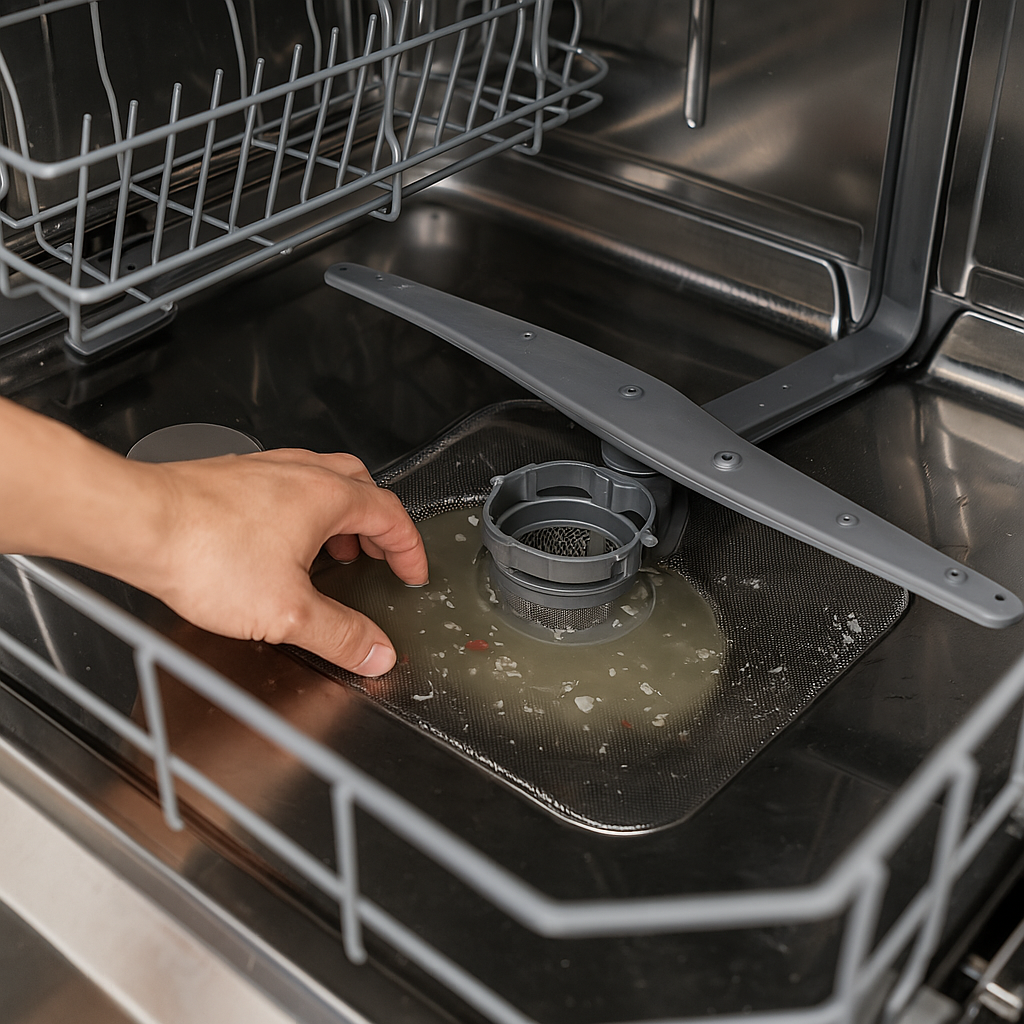Dishwasher Not Draining? Don’t Panic—Here’s What to Do
There’s nothing more frustrating than opening your dishwasher after a wash cycle and finding it full of standing water. Not only does this prevent your dishes from getting clean, but it can also lead to bad odors, mold growth, and even water damage if left unresolved.
At LOWL, we’ve helped hundreds of homeowners across Corona, Ontario, Rancho Cucamonga, and beyond with dishwashers that won’t drain properly. In this article, we’ll walk you through the most common causes of drainage issues, simple DIY fixes, and when it’s time to call a professional.
1. Stop and Check for Obvious Signs
Before jumping to conclusions or calling for service, take a look at the situation:
- Is the dishwasher completely full of water, or just a little at the bottom?
- Did the cycle complete, or did it stop midway?
- Are there error lights or beeping sounds on the control panel?
Sometimes the problem is as simple as a power interruption or a child lock being accidentally engaged.
2. Inspect the Dishwasher Filter and Drain Area
The first place to check is the bottom of the dishwasher, where the filter and drain system are located.
How to check:
- Remove the bottom rack of the dishwasher.
- Look for food debris, paper, or broken glass around the filter or drain.
- Take out the filter (check your manual for exact steps) and rinse it thoroughly under warm water.
A clogged filter is one of the most common causes of a dishwasher that won’t drain. Cleaning it might instantly solve the problem.
3. Check the Drain Hose for Kinks or Blockages
The drain hose carries wastewater from the dishwasher to your kitchen sink or garbage disposal. If it’s kinked, blocked, or clogged, water can’t flow out.
What to do:
- Look under the sink and inspect the drain hose.
- Make sure it’s not bent sharply or clogged with gunk.
- If you're comfortable, disconnect the hose and rinse it out with a long flexible brush or run water through it.
⚠️ Important: Turn off the power to the dishwasher before disconnecting any hoses.
4. Test the Garbage Disposal (If Applicable)
If your dishwasher is connected to a garbage disposal, a clog in the disposal can cause water to back up into the dishwasher.
Try this:
- Run the disposal with cold water for 15–30 seconds.
- Make sure there are no large food scraps or blockages in the disposal.
- If the dishwasher was recently installed, ensure the disposal knockout plug was removed—this is a common installation mistake.
5. Make Sure the Air Gap Is Clear
Some dishwashers include an air gap—a small cylindrical device mounted near the sink faucet that prevents dirty water from re-entering the dishwasher.
To check:
- Twist off the air gap cover.
- Look for food particles, grease, or debris inside.
- Clean it out with warm soapy water or use a bottle brush.
A blocked air gap can interfere with drainage, especially if water is spilling onto the countertop near the sink.
6. Run a Short Cycle to Test
After performing the steps above, run a short rinse cycle with no dishes. Watch and listen to see if the water drains at the end.
- If it drains properly, congratulations—you fixed it!
- If it still doesn’t drain, it’s time to investigate deeper or call a pro.
7. When to Call LOWL for Professional Dishwasher Repair
Some drainage issues are too complex or risky to fix on your own. If the problem is caused by:
- A faulty drain pump
- A broken float switch
- Wiring or control board issues
- Or you’re simply unsure what’s wrong
It’s time to bring in a certified appliance technician.
At LOWL, we offer same-day and next-day dishwasher repair services across Southern California, including Corona, Ontario, and Moreno Valley. Our technicians are trained to handle all major dishwasher brands and models.
We’ll diagnose the issue, explain your options, and fix the problem quickly and affordably, so you can get back to enjoying clean dishes and peace of mind.
How to Prevent Future Drainage Problems
Here are a few simple habits that can help keep your dishwasher draining properly:
- Scrape food off dishes before loading (no need to rinse completely).
- Clean the filter once a month, especially if you use your dishwasher daily.
- Run hot water in the sink before starting a cycle—this helps the dishwasher begin with hot water for better performance.
- Avoid overloading—improper loading can block spray arms and prevent draining.
Final Thoughts
A dishwasher that won’t drain is more than an annoyance—it’s a sign that something needs attention. By following the steps in this guide, you can often solve the problem on your own. But if the issue persists or you’d rather not take the risk, we’re here to help.
📞 Call LOWL at +1 951 620 9609 to schedule a professional dishwasher repair and get your kitchen running smoothly again. We’ll provide fast, affordable service you can count on.





